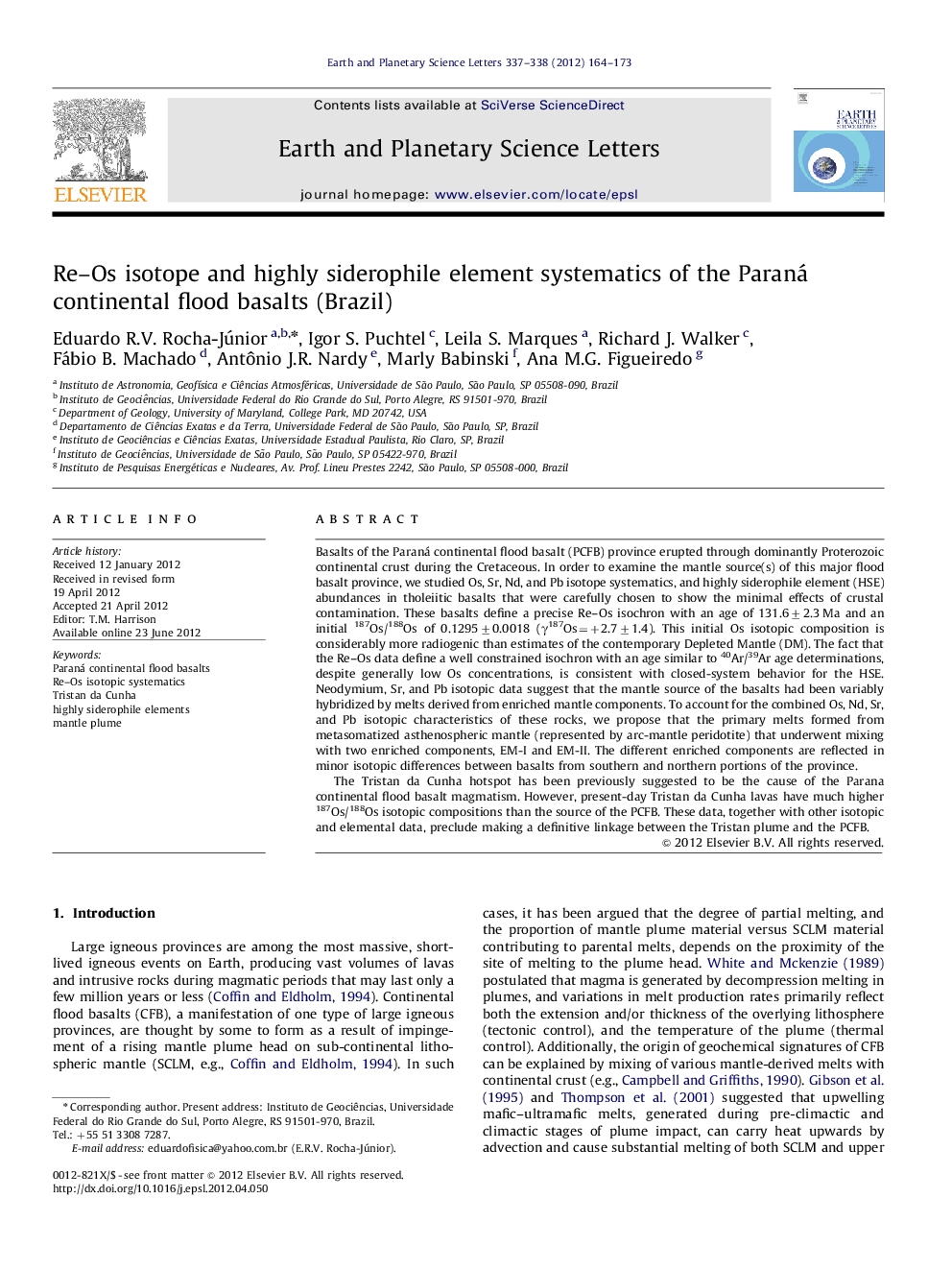| کد مقاله | کد نشریه | سال انتشار | مقاله انگلیسی | نسخه تمام متن |
|---|---|---|---|---|
| 4677452 | 1634802 | 2012 | 10 صفحه PDF | دانلود رایگان |

Basalts of the Paraná continental flood basalt (PCFB) province erupted through dominantly Proterozoic continental crust during the Cretaceous. In order to examine the mantle source(s) of this major flood basalt province, we studied Os, Sr, Nd, and Pb isotope systematics, and highly siderophile element (HSE) abundances in tholeiitic basalts that were carefully chosen to show the minimal effects of crustal contamination. These basalts define a precise Re–Os isochron with an age of 131.6±2.3 Ma and an initial 187Os/188Os of 0.1295±0.0018 (γ187Os=+2.7±1.4). This initial Os isotopic composition is considerably more radiogenic than estimates of the contemporary Depleted Mantle (DM). The fact that the Re–Os data define a well constrained isochron with an age similar to 40Ar/39Ar age determinations, despite generally low Os concentrations, is consistent with closed-system behavior for the HSE. Neodymium, Sr, and Pb isotopic data suggest that the mantle source of the basalts had been variably hybridized by melts derived from enriched mantle components. To account for the combined Os, Nd, Sr, and Pb isotopic characteristics of these rocks, we propose that the primary melts formed from metasomatized asthenospheric mantle (represented by arc-mantle peridotite) that underwent mixing with two enriched components, EM-I and EM-II. The different enriched components are reflected in minor isotopic differences between basalts from southern and northern portions of the province.The Tristan da Cunha hotspot has been previously suggested to be the cause of the Parana continental flood basalt magmatism. However, present-day Tristan da Cunha lavas have much higher 187Os/188Os isotopic compositions than the source of the PCFB. These data, together with other isotopic and elemental data, preclude making a definitive linkage between the Tristan plume and the PCFB.
► The Re–Os isotopic data for the PCFB define an isochron with an age of 131.6±2.3 Ma.
► The 187Os/188Osi=0.1295 represents the best determination for the source of the PCFB.
► The 187Os/188Osi of the PCFB is within the chondritic and primitive mantle range.
► The 187Os/188Osi of the Tristan plume is considerably more radiogenic than the PCFB.
► The PCFB were derived from the asthenosphere (similar to arc-mantle peridotite) variably enriched with EM-I and EM-II.
Journal: Earth and Planetary Science Letters - Volumes 337–338, 1 July 2012, Pages 164–173